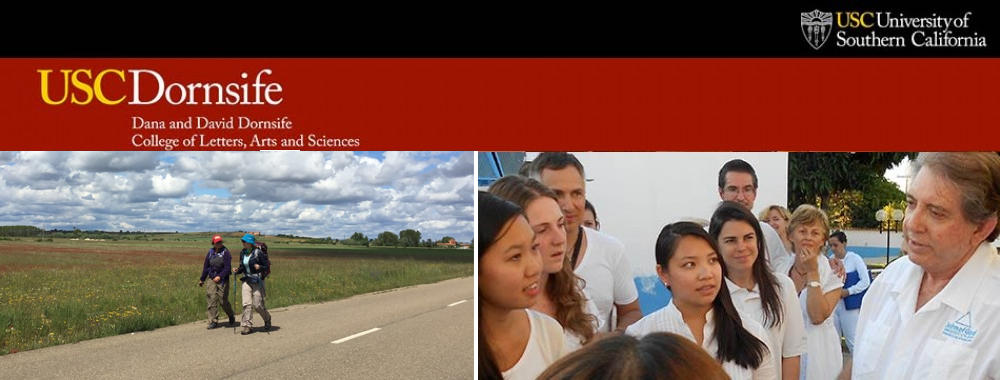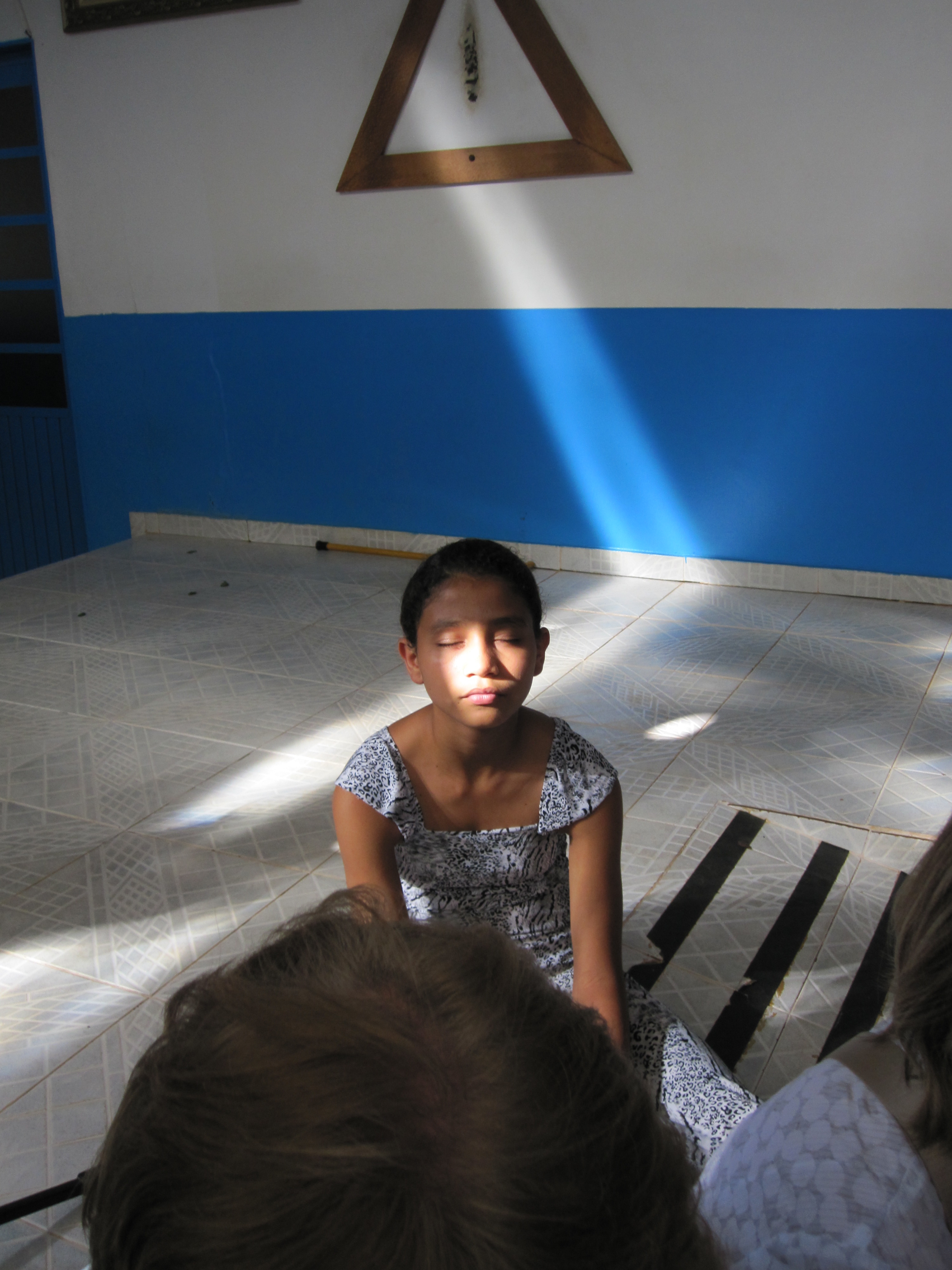by Caitlin Sims
The first 24 hours at the Casa Dom Inácio de Loyola have been a blur. As we join the throngs of people dressed completely in white, the sounds of Brazilian birds and the melodic tones of Portuguese greet us at the gates. Past the bookstore, snack shack, and translation windows lies the Great Hall, the Casa’s primary meeting space. “Pilgrims” from Brazil, the States, and countries throughout Europe have traveled to the Casa to see João de Deus (John of God, also referred to as “The Entity”), a full-trance medium who channels over 35 spirits, in the hope that he will cure all sorts of medical maladies from multiple sclerosis to cancer or assist in their quest for spiritual healing and enlightenment.
In the Great Hall, they sit on simple pews and chairs or stand wherever there is room. The space is so packed that people spill out into the surrounding courtyard and gardens. Large fans buzz above, attempting in vain to keep those waiting to pass before The Entity cool and comfortable. Some pray quietly with their legs and arms uncrossed (so the spiritual “current” of energy can flow freely) while others observe the many pictures of John of God and Jesus that decorate the room. Within an hour, two pilgrims collapse on the ground, and it is not apparent whether the cause is heat exhaustion due to overcrowding, possession by the spirits, or medical infirmity. The service begins with a rare introduction from John of God himself (he usually only comes into the Great Hall to perform physical surgeries or lead a short prayer), followed by the recitation of the Lord’s Prayer (Vai Nosso in Portuguese) and Ave Maria. The Casa staff begin to call the different lines one by one (lines for first-time visitors, for those who underwent “spiritual interventions” the week prior, etc.), instigating a chaotic shuffle and crowding of people anxious to be seen by The Entity.
Hundreds of people have come to the Casa for healing, so these lines take hours to process. In the meantime, Casa staff share testimonials and affirmations in soothing monotone voices, periodically circling the room to scold those who are talking or crossing their arms and legs. Four hours after arriving, our time has finally come to line up and pass before John of God. I clutch my paper with my three translated “intentions” (or wishes) to be given to The Entity as I am pushed to the front of the Great Hall and into the “current rooms”. The current rooms uphold a strong healing energy, and I pass by people mediating while soft music plays in the background as I make my way to John of God. He sits on a large, ornately carved wooden chair, surrounded by massive crystals believed to possess healing powers. A translator reads him my intentions and his prescription is to have me meditate in the current room that afternoon. Prescriptions range from sitting in current to visiting his waterfall to having a crystal bed treatment, but are most often a strong recommendation to take his passion flower supplements, available for purchase at his pharmacy. After hours of waiting and a grand total of five seconds before John of God, the morning session concludes and I return after a few hours to carry out his instructions and sit in current. Despite the initial discomfort, meditating in the current rooms was a relatively positive experience. This meditation is a prime example of the intermingling of individual spiritual goals and community bonding and support, one of many contradictions at the Casa.
After contemplating the day’s events, the Casa ultimately emerges as a place of paradox. While the Casa champions individual “work” and healing, they strictly enforce all sorts of rules. Pilgrims are not allowed to cross their arms and legs, are shushed when talking in the Great Hall, are not permitted to visit the waterfall without explicit permission from the Entity, are supposed to omit peppers and alcohol from their diet, and must adhere to a whole host of restrictions after undergoing spiritual intervention. While John of God and the Casa staff provide explanations for why these rules are in place, they create an atmosphere in which individual spiritual journeys are encouraged, but only within certain parameters. In addition, the Casa is described as a place of peace, unconditional love, and profound spiritual enlightenment. However I find it hard to believe that a space reminiscent of a theme park with lines that take hours, extreme heat and crowding, sometimes hokey music, and souvenirs for purchase is conducive to deep spiritual healing and growth. Finally, the Casa and John of God himself are portrayed as beacons of generosity and service, in which all are welcome regardless of color, creed, or socioeconomic background. While it is true that John of God has selflessly given his life to helping and healing others without asking for compensation, the Casa does indeed operate as a business. Many of the Entity’s “cures” like supplements or crystal bed treatment require payment and John of God owns many shops and otherwise controls business in town (prohibiting taxi drivers to drive to other healers and approving practitioners like masseuses and yogis). These paradoxes set off internal alarm bells in my study of the Casa and John of God, yet there is undoubtedly much more to see, experience, and interpret in our remaining time in Abadânia.



